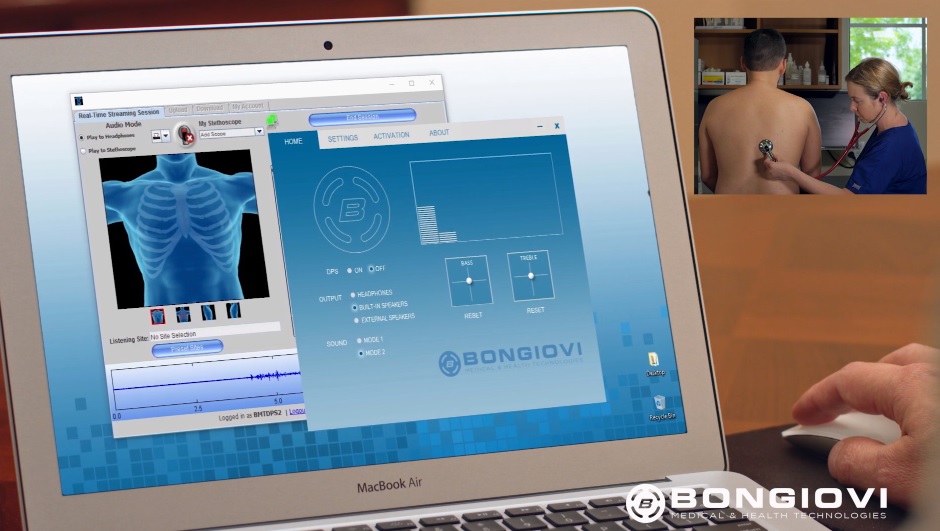Origins

The Medical Digital Power Station, or MDPS™ is the FDA listed1 version of the award-winning Bongiovi DPS™ audio processor for the consumer market. While the Bongiovi DPS™ algorithm has been used in many devices to make music and movies sound great, the MDPS algorithm and its associated parameter sets2 are specially calibrated and verified for commercial and medical applications.
Loudness Matters
At it’s core, the MDPS algorithm is an advanced dynamic range controller3 (DRC). Dynamic range, with reference to audio, is the difference between the loudest sound and the quietest sound in a signal. A dynamic range controller has the ability to “turn down” the loud sounds and “turn up” the quiet sounds so the volume difference is smaller.
While dynamic range control is straightforward on general principle, it is quite complex to implement in a manner that does not cause artifacts or unwanted changes in volume to the listener. MDPS leverages the patented Bongiovi DRC methods to achieve amazing results for medical and communication applications.
How it Works
During development, our auditory cortex becomes sensitized to areas of the frequency spectrum associated with the human voice. Also, higher frequencies (above 500Hz) contain the important information we use every day to navigate and interact with our world.
The Bongiovi DRC “listens” to the sound the same way our auditory cortex does. This means when the algorithm automatically changes the volume level, the result is a signal that maintains a very consistent perceived loudness with no unnatural effects.
In contrast, most DRC algorithms are sensitive only to the average power of a signal so the resulting change in perceived loudness is not “natural sounding” in many circumstances. An unnatural sound results in our brain having to work harder to comprehend important information. This can result in fatigue and mistakes at the workplace.
MDPS combines unique DRC with several other high fidelity audio post processing components in a patented structure to achieve results not found in any other solution.
1MDPS is an FDA Listed Class I Medical Device Data System.
2DPS and MDPS parameter sets are also called “Profiles”. Profiles created for MDPS cannot be loaded into consumer DPS applications.
3Also know as a Compressor, Limiter or Automatic Gain Controller (AGC).
Medical and Communication Applications
As the only post-processing algorithm with an FDA listing, MDPS delivers several important benefits to the medical and commercial space.
Speech Intelligibility
Due the unique nature of the Bongiovi DRC methods, a voice (transmitted or pre-recorded) can be processed to become much clearer and easier to understand. This is especially effective in environments where hearing a voice over loud background noise is critical. Bongiovi Medical engineers measure the intelligibility before and after adding MDPS processing using standard, globally recognized tests for speech intelligibility. Click here for more information on Speech Intelligibility.

Auscultation
Due to the equal-loudness contour of human hearing, important low frequency information in biological sounds may be up to 8 times more difficult to hear than higher frequency information. For this reason, acoustic and electronic stethoscopes have been “tuned” to be more sensitive to low frequency information. However, this still presents a problem in telemedicine, teaching, or research situations where a physician would like to hear these sounds over a speaker or a headset with compromised low frequency response.
MDPS processing may be used for heart, lung, vascular and other biological sounds to be heard on audio hardware besides the traditional binaurals. MDPS has even been demonstrated to deliver clear ausculatory signals on laptop speakers and low cost headphones.
MDPS is not yet FDA Class 2 approved. BMHT is currently conducting research trials with major institutions to establish the efficacy of MDPS in aiding the diagnosis of specific conditions.
Contact us to learn more about the science behind MDPS Audio Processing.